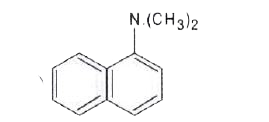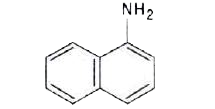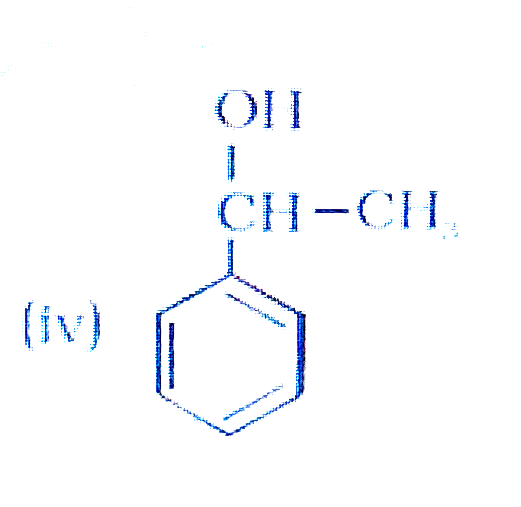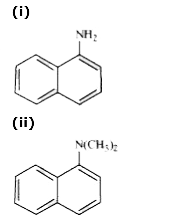Classify the following compounds as primary, secondary and tertiary halides.
To classify the given compounds as primary, secondary, or tertiary halides, we need to analyze the structure of each compound and determine the number of carbon atoms attached to the carbon that is bonded to the halogen (in this case, bromine).
1. Identify the first compound: 1-bromo-but-2-ene
- Structure: The compound has a total of four carbon atoms (but-2-ene).
- Drawing the structure:
- The structure can be represented as:
CH2=CH−CH2−CH3
- The bromine (Br) is attached to the first carbon:
Br−CH2−CH=CH−CH3
- Alpha Carbon: The carbon attached to the bromine is the alpha carbon (C1).
- Count attached carbons: The alpha carbon (C1) is attached to only one carbon (C2).
- Classification: Since the alpha carbon is attached to only one carbon, 1-bromo-but-2-ene is a primary halide.
2. Identify the second compound: 4-bromo-pent-2-ene
- Structure: This compound has five carbon atoms (pent-2-ene).
- Drawing the structure:
- The structure can be represented as:
CH3−CH=CH−CH2−CH3
- The bromine is attached to the fourth carbon:
CH3−CH=CH−CH(Br)−CH3
- Alpha Carbon: The carbon attached to the bromine is the alpha carbon (C4).
- Count attached carbons: The alpha carbon (C4) is attached to two carbons (C3 and C5).
- Classification: Since the alpha carbon is attached to two carbons, 4-bromo-pent-2-ene is a secondary halide.
3. Identify the third compound: 2-bromo-2-methyl-propane
- Structure: This compound has three carbon atoms in the main chain and a methyl group (propane).
- Drawing the structure:
- The structure can be represented as:
CH3−C(Br)−CH3
- The bromine is attached to the second carbon:
CH3−C(Br)(CH3)−CH3
- Alpha Carbon: The carbon attached to the bromine is the alpha carbon (C2).
- Count attached carbons: The alpha carbon (C2) is attached to three carbons (two CH3 groups and one CH3 from the main chain).
- Classification: Since the alpha carbon is attached to three carbons, 2-bromo-2-methyl-propane is a tertiary halide.
Summary of Classifications:
- 1-bromo-but-2-ene: Primary halide
- 4-bromo-pent-2-ene: Secondary halide
- 2-bromo-2-methyl-propane: Tertiary halide
- Structure: The compound has a total of four carbon atoms (but-2-ene).
- Drawing the structure:
- The structure can be represented as:
CH2=CH−CH2−CH3
- The bromine (Br) is attached to the first carbon:
Br−CH2−CH=CH−CH3
- Alpha Carbon: The carbon attached to the bromine is the alpha carbon (C1).
- Count attached carbons: The alpha carbon (C1) is attached to only one carbon (C2).
- Classification: Since the alpha carbon is attached to only one carbon, 1-bromo-but-2-ene is a primary halide.
- Structure: This compound has five carbon atoms (pent-2-ene).
- Drawing the structure:
- The structure can be represented as:
CH3−CH=CH−CH2−CH3
- The bromine is attached to the fourth carbon:
CH3−CH=CH−CH(Br)−CH3
- Alpha Carbon: The carbon attached to the bromine is the alpha carbon (C4).
- Count attached carbons: The alpha carbon (C4) is attached to two carbons (C3 and C5).
- Classification: Since the alpha carbon is attached to two carbons, 4-bromo-pent-2-ene is a secondary halide.
- Structure: This compound has three carbon atoms in the main chain and a methyl group (propane).
- Drawing the structure:
- The structure can be represented as:
CH3−C(Br)−CH3
- The bromine is attached to the second carbon:
CH3−C(Br)(CH3)−CH3
- Alpha Carbon: The carbon attached to the bromine is the alpha carbon (C2).
- Count attached carbons: The alpha carbon (C2) is attached to three carbons (two CH3 groups and one CH3 from the main chain).
- Classification: Since the alpha carbon is attached to three carbons, 2-bromo-2-methyl-propane is a tertiary halide.
- 1-bromo-but-2-ene: Primary halide
- 4-bromo-pent-2-ene: Secondary halide
- 2-bromo-2-methyl-propane: Tertiary halide
Topper's Solved these Questions
- HALOALKANES AND HALOARENESBook:NCERT EXEMPLAR ENGLISHChapter:HALOALKANES AND HALOARENESExercise:Match Type Questions
Explore 6 Videos
- HALOALKANES AND HALOARENESBook:NCERT EXEMPLAR ENGLISHChapter:HALOALKANES AND HALOARENESExercise:Assertion & Reason
Explore 10 Videos
- HALOALKANES AND HALOARENESBook:NCERT EXEMPLAR ENGLISHChapter:HALOALKANES AND HALOARENESExercise:MCQs (More than one option)
Explore 12 Videos
- GENERAL PRINCIPLE AND PROCESSES OF ISOLATION OF ELEMENTS Book:NCERT EXEMPLAR ENGLISHChapter:GENERAL PRINCIPLE AND PROCESSES OF ISOLATION OF ELEMENTS Exercise:Long Answer Type Questions
Explore 1 Video
- P-BLOCK ELEMENTSBook:NCERT EXEMPLAR ENGLISHChapter:P-BLOCK ELEMENTSExercise:Long Answer Type Questions
Explore 3 Videos
Similar Questions
Classify the following amines as primary, secondary and tertiary:

View SolutionClassify the following amines as primary, secondary and tertiary:

View SolutionClassify the following alcohols as primary, secondary, or tertiary :
View SolutionClassify the following as primary ,secondary and tertiary alcohols :
CH3∣CH3∣CH3−C−CH2OH
(ii) H2C=CH−CH2OH
(iii) CH3−CH2−CH2−OH
View SolutionClassify the following as primary, secondary and tertiary alcohols:
(i) CH3−CH3| C| CH3−CH2OH (ii) H2C=CH−CH2OH
(iii) CH3−CH2−CH2−OH
(iv)

View SolutionClassify the following amines as primary, secondary or tertiary:

(iiii) (C2H5)2CHNH2 (iv)(C2H5)2NH
View SolutionWhat are primary, secondary and tertiary roots ?
View SolutionGive one chemical test to distinguish between the following pairs of compounds .
Secondary and tertiary amines
View SolutionOrder of boiling point among primary , secondary and tertiary alcohols is :
View SolutionWhich of the following is used for distinguishing primary , secondary and tertiary alcohols ?
View Solution

